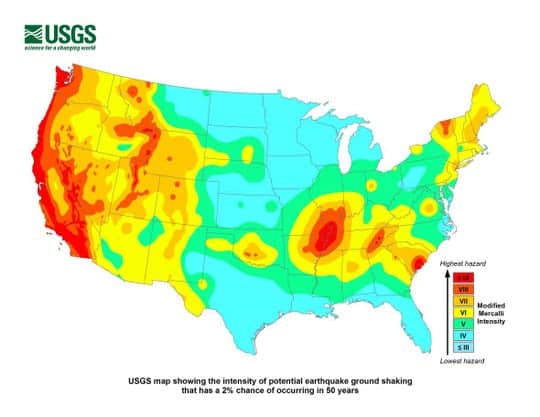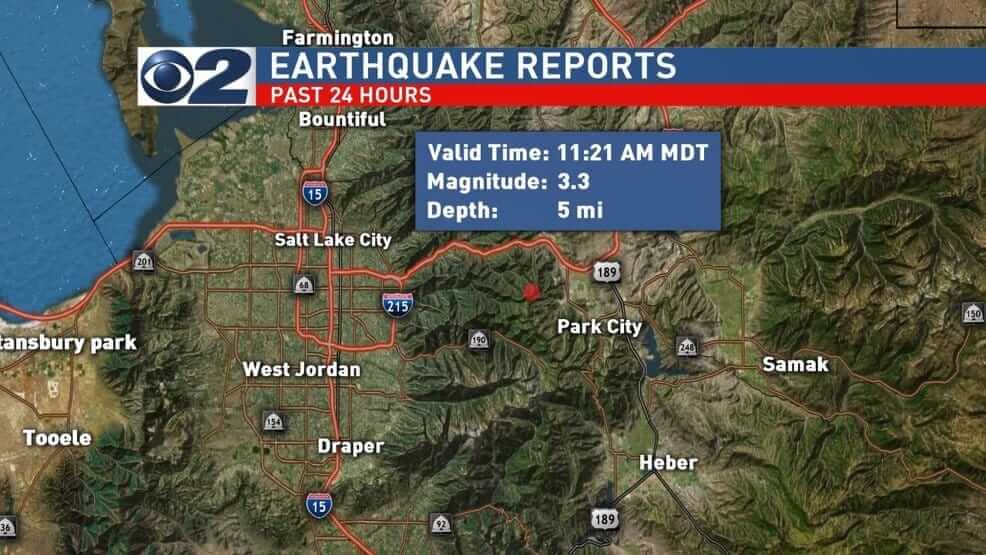“Utah is NOT ready for the big one.”
That’s what I heard when I went to a preparedness expo a few weeks ago. I had the chance to talk with the guys from Utah Disaster Relief and that’s exactly what they told me. They told me about all of the little clean-up jobs the company takes care of on a daily basis. Most of these are simple power outages, water line breaks and flooded basements.
As they are helping these families get their issues cleaned up, they notice quickly that very few of them have even a 3 day supply of food, water and emergency supplies. They also told me that if Utah has an earthquake in the 7.0 range, it is estimated that we will lose power and water for a minimum of 3 weeks. If we get anything larger than that, it would most certainly be more like a couple of months.
This message is not just for Utahan’s but for everyone. If you don’t have a minimum of a 3 day supply of food and emergency supplies, get it NOW. Take a few bucks each month and store a little more until you have enough to take care of your family for a full month.
There Is No Predicting An Earthquake
Even though “Earthquake Forecaster” is a position on LinkedIn’s 12 Jobs You’ll Be Recruiting For in 2030 article, it is going to be many years before we’re able to predict earthquakes with any degree of accuracy.
Since there are so many elements that go into earthquake survival, it is important to familiarize yourself with what you are up against. Knowing and preparing for the potential threats in your area could mitigate the amount of damage caused, due to your preparation beforehand.
I have researched and compiled the most recent information on everything earthquake preparedness, into an easy-to-read ebook. Grab it now to save yourself the time and energy of hopping from site to site, trying to determine which information is still good and which information is outdated.
How Do I Analyze My Earthquake Risk Level?
Although we cannot accurately predict when or where an earthquake will happen, its magnitude, or its intensity, we can get a sense of our “risk level” by asking a few basic questions.
To analyze your earthquake risk level, ask yourself the following questions. The more questions that you answer “yes” to, the greater your risk for being involved in a higher-risk earthquake.
- Do you live on or near a fault line?
- Are you in a flood zone?
- Are you at risk of liquefaction in your area?
- Is there potential for rock or mudslides?
- Is your house built to withstand a certain magnitude earthquake?
- Are there any natural objects that could make the situation worse?
- Are there volcanoes near your house?
- Are there lakes near your house?
- Are there aquifers near your house?
- Are there any man-made objects or activities that could make the situation worse?
- Are there dams near your house?
- Are there bridges near your house?
- Are there tunnels near your house?
- Are there oil wells near your house?
Living near a fault line greatly increases the chance of major damage done by an earthquake. Experts predict that if a large earthquake were to happen along any of the major US fault lines, it would take less than 2 minutes for millions of people to lose power, water, and internet.
It is hard for many of us to imagine how this might feel. But it is essential to think through the situation, prepare for the situation, and practice in case of this situation.
Preparation for earthquakes is critical because predictability is impossible.
Knowing the answers to these questions can help you best prepare for the risk specific to your area. For example, knowing that you are in a flood zone may change your family emergency earthquake plan.
Understanding what risk your surroundings bring will help you know how best to proceed in your emergency preparation.
LIVE EARTHQUAKE WATCH ON YOUTUBE
Where Can I find a Live Earthquake Map?
A live earthquake map shows you real-time updates on the magnitude of recent earthquakes around the world, or in your specific area. This is beneficial for being informed and involved in what is happening worldwide.
In addition to keeping an eye on earthquakes in your area, these maps are beneficial to provide you with information about earthquakes in areas where you may plan to travel or where your friends and family might live.
There are many websites that offer a live earthquake map, but they can be a little tedious to sort through. The most reliable website to find a live earthquake map is usgs.gov website.
If you want to go one step further in your involvement and preparedness for earthquakes, you can also sign up for text alerts and email alerts based on the specific filters you set. This feature allows you to receive alerts based on your location and/or the magnitude of different earthquakes.
What Is The Most Dangerous Fault Line In America?
The Hayward fault line, running along the East Bay of California, is currently believed to be the most dangerous fault line in America. Although the San Andreas fault gets more of the attention because of the massive earthquakes it has caused within the last century, experts believe that the Hayward fault line is among the most active faults. They warn that it will likely be the source of the next devastating earthquake in the San Francisco-Bay Area. Even further than this, many believe that it could be the producer of the greatest earthquake that the United States has ever seen.
In addition to this, the Hayward fault line runs through highly populated cities including Richmond, El Cerrito, Berkeley, Oakland, San Leandro, Castro Valley, Hayward, Union City, Fremont, and San Jose. Many churches, public transportation systems, schools, and homes could be devastated.
Because of this, even if the magnitude was perhaps not as great as an earthquake in another area, the intensity–measuring the damage done–could be astronomical.
Should I Buy Earthquake Insurance For My Home?
As earthquakes are not covered under a standard home insurance policy, you will need to add earthquake coverage to your policy or buy stand-alone earthquake insurance to protect your home from quake damage.
But coverage can get pretty expensive. So is it really worth it?
If you live near an active fault line, where major damage within your lifetime is likely, the answer is yes.
If you live in a low-risk area, it is probably still a smart idea, but not necessarily essential.
To check out how at-risk you are, look at the map below:

(Map courtesy of U.S. Geological Survey)
In addition to considering how risky your area is of experiencing seismic activity, you will also want to consider how earthquake-proof your home is. If it is built of stone or brick, you have a higher chance of your home sustaining major damage. Most earthquake insurances cover only direct physical loss from an earthquake. You will want to read the fine print in the insurance to make sure that everything you feel is essential to be covered will be covered by your specific insurer.
How Much Should I Pay For Earthquake Insurance?
This varies widely from area to area, especially based on risk, but we have outlined a few thoughts about the amount to pay for earthquake insurance below.
Earthquake deductibles are typically between 5–25% of your home’s insured value, which means that there’s a good chance you will still be paying quite a bit in the case of damage. When seeking an earthquake insurance policy, you will want to try to find one with a lower deductible if possible.
The typical cost for earthquake insurance for areas that are lower risk is $100-$300 annually. In higher risk areas, earthquake insurance is generally around $800 annually.
FULL EARTHQUAKE SURVIVAL GUIDE
Again, for a full earthquake survival guide, check out our eBook using the link below.

